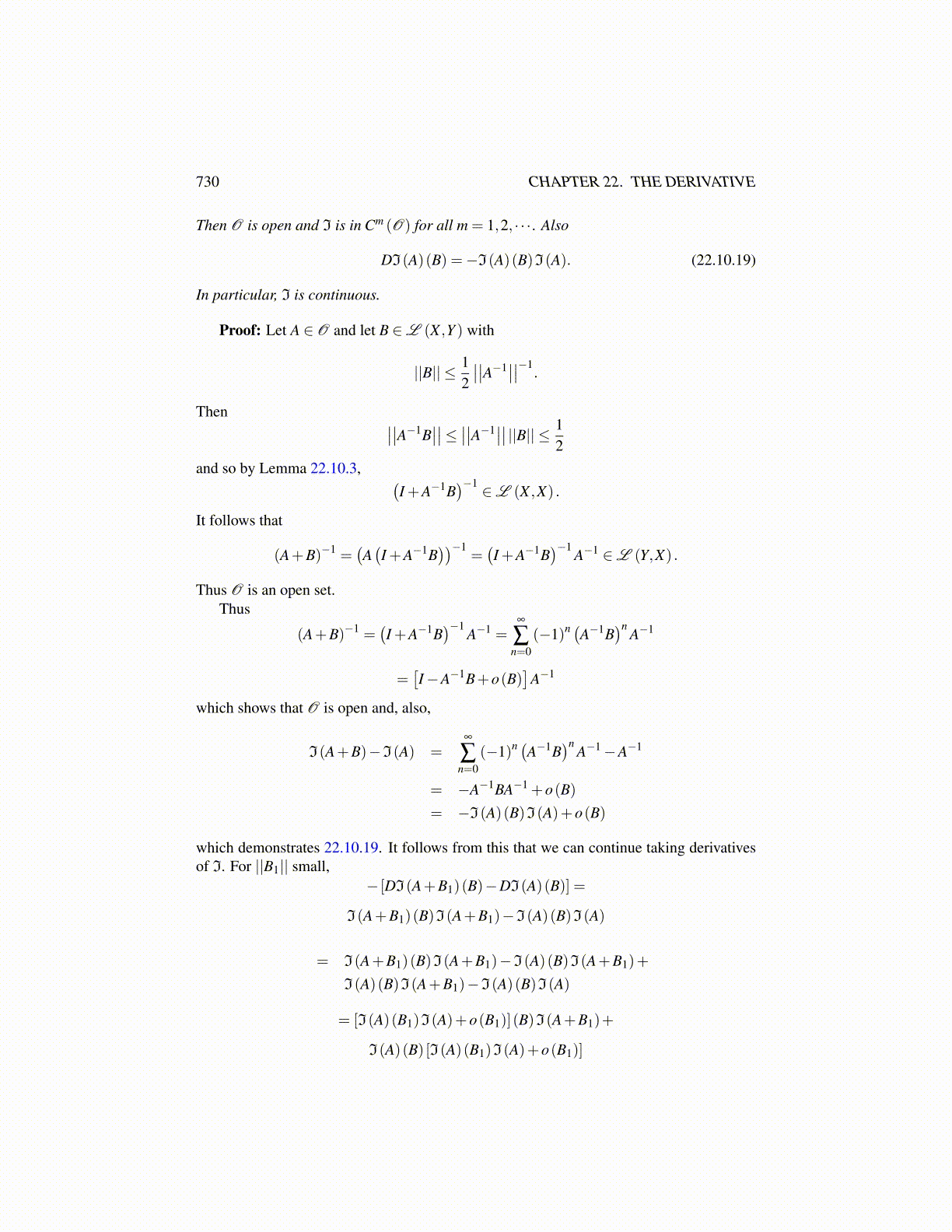
730 CHAPTER 22. THE DERIVATIVE
Then O is open and I is in Cm (O) for all m = 1,2, · · · . Also
DI(A)(B) =−I(A)(B)I(A). (22.10.19)
In particular, I is continuous.
Proof: Let A ∈ O and let B ∈L (X ,Y ) with
||B|| ≤ 12
∣∣∣∣A−1∣∣∣∣−1.
Then ∣∣∣∣A−1B∣∣∣∣≤ ∣∣∣∣A−1∣∣∣∣ ||B|| ≤ 1
2and so by Lemma 22.10.3, (
I +A−1B)−1 ∈L (X ,X) .
It follows that
(A+B)−1 =(A(I +A−1B
))−1=(I +A−1B
)−1A−1 ∈L (Y,X) .
Thus O is an open set.Thus
(A+B)−1 =(I +A−1B
)−1A−1 =
∞
∑n=0
(−1)n (A−1B)n
A−1
=[I−A−1B+o(B)
]A−1
which shows that O is open and, also,
I(A+B)−I(A) =∞
∑n=0
(−1)n (A−1B)n
A−1−A−1
= −A−1BA−1 +o(B)
= −I(A)(B)I(A)+o(B)
which demonstrates 22.10.19. It follows from this that we can continue taking derivativesof I. For ||B1|| small,
− [DI(A+B1)(B)−DI(A)(B)] =
I(A+B1)(B)I(A+B1)−I(A)(B)I(A)
= I(A+B1)(B)I(A+B1)−I(A)(B)I(A+B1)+
I(A)(B)I(A+B1)−I(A)(B)I(A)
= [I(A)(B1)I(A)+o(B1)] (B)I(A+B1)+
I(A)(B) [I(A)(B1)I(A)+o(B1)]